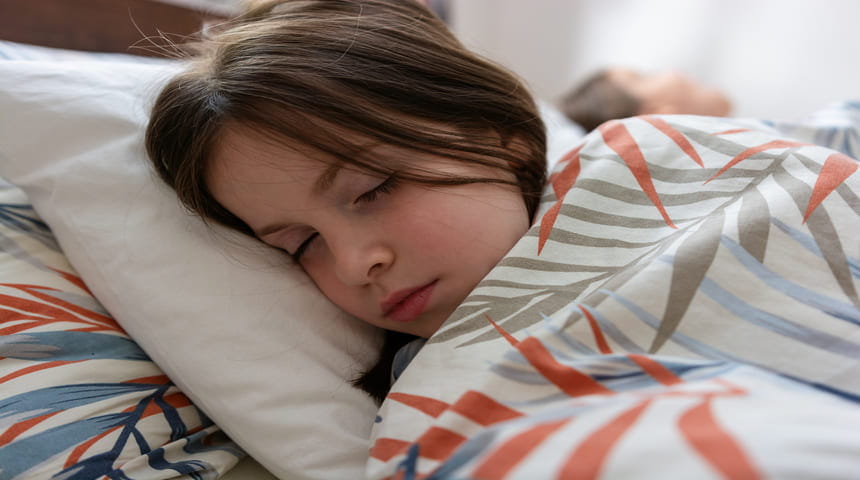Will My Student Athlete Be a Healthier Adult?
Playing sports as a child can set your kid up for a lifetime of healthy habits. According to the Centers for Disease Control and Prevention, one in five children is obese in the United States. As a result, diabetes, high cholesterol and hypertension are rising among children, who historically hadn’t been plagued by these health issues.
Most of these chronic conditions are linked to inactivity, but exercise — including both team and solo sports — can help safeguard your child’s health. It’s important to ensure that kids are moving enough to aid in their overall physical and mental development, preventing chronic illnesses and prioritizing other good habits, such as:
-
Getting a healthy amount of good sleep
-
Following a nutritious diet
-
Creating and sticking to a routine
Studies have found that children who participated in sports maintain these and other healthy habits throughout their adult lives.
Physical Activity Makes a Big Difference
Only about a quarter of kids in the United States are sufficiently active for their age and abilities. Here are some reasons to get your child to move more:
-
Prevent obesity
-
Reduce stress
-
Improve flexibility and balance
-
Improve sleep quality
-
Increase self-confidence and discipline
-
Sharpen mental focus and performance
But how much physical activity is enough? The 2018 Physical Activity Guidelines for Americans provide insight on how much activity children need to remain physically healthy, and the American Academy of Pediatrics (AAP) has amended those guidelines to include infants and toddlers.
Recommended activity for infants and toddlers:
-
Infants should be active several times a day through interactive floor play like “tummy time.”
-
Toddlers should engage in at least three hours of activities that develop gross motor skills daily, such as walking, unstructured free play or playing on a playground.
Recommended activity for ages 3 to 5:
-
Three hours of light or moderate-to-vigorous physical activity daily.
-
Activities could include playing in the backyard or playground, taking a family walk or a trip to the park.
Recommended activity for ages 6 to 17:
-
At least one hour of moderate-to-vigorous physical activity daily.
-
Activities that will make you break a sweat or short of breath are good options, including cardio (running, bike riding and jumping rope).
-
Aerobics (swimming or skating) and muscle-building exercises (push-ups and squats) should be included three days a week.
Encouraging Kids To Move
Your pediatrician can guide you with recommendations for your child’s physical activity. While playing team or solo sports are a great way to keep kids active and healthy, here are some ideas for additional ways to encourage activity in a less structured setting:
Cut down screen time to no more than two hours a day. If your child is home-schooled and uses of virtual learning, manage how much extra time they spend playing video games or watching TV.
Be a role model by showing your children that you enjoy exercise. Do sports you enjoy together, go to the gym together or encourage family walks.
Plan ahead by scheduling time for activity. For example, slot in some exercise every day after school and homework.
Make it fun by doing activities your kids enjoy. Don’t force them to do activities or sports if they don’t want to and ask them for suggestions.
Adjusted Approaches for Kids’ Abilities
If your child has special needs that affect their physical, emotional or mental abilities, they may need an extra nudge or adjusted approach to get physical activity. Since physical activities such as sports may be more challenging to navigate, you should:
-
Work with your pediatrician to create a schedule and activities best suited to your child’s condition.
-
Establish and stick to a routine, particularly if they have disabilities such as autism. spectrum disorder or ADHD, which can affect behavior, teamwork, communication and concentration.
-
Encourage them to try different activities to help them discover what they enjoy.
-
Talk to their teachers about safe sports or other physical activities they can participate in at school.
-
Praise them for keeping active and keep track of their progress. This could involve keeping a progress chart on the fridge.
If your child has physical challenges, moving more could help them with functional movements. Talk to your pediatrician about groups or programs your child can participate in. And remember to join in, since having their parent involved will make any activity even more fun and put them at ease.
Choose to Stay in Touch
Sign up to receive the latest health news and trends, wellness & prevention tips, and much more from Orlando Health.
Sign Up










